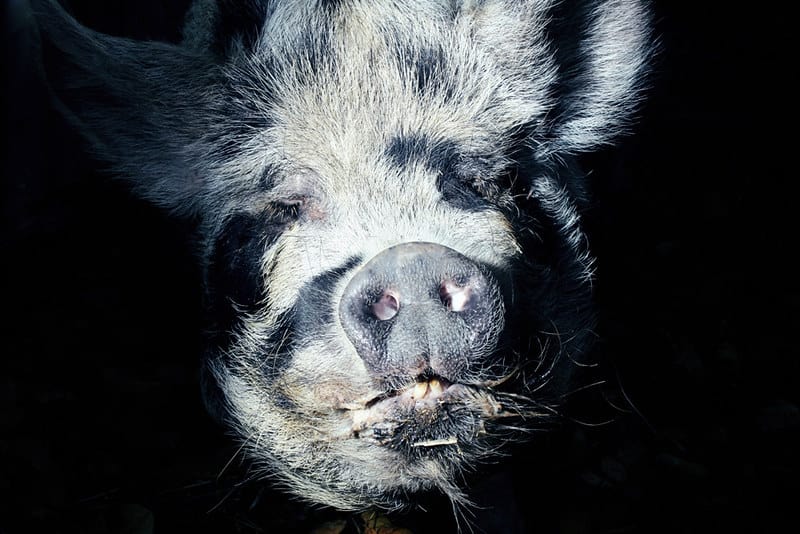One of the many fascinating animals to study is the pig. Pigs are one of the most populous land animals in the world. Pigs are very friendly and enjoy socializing with each other and with other animals. They are also very intelligent animals. With this interest we get many question one of them being:
Are pigs mammals? Yes, pigs are mammals, just as humans are mammals. A pig’s body has many of the same structures as does a human body. Mammals are classified together, but animals in this class come from many different parts of the world, ranging in size from the tiny shrew to a 200-ton whale.

But each member of this diverse class of animals shares 8 defining characteristics:
1. Hair and Fur – All mammals have hair or fur growing from parts of their bodies. The hair may not be visible at every stage of the animals’ life cycle. Some mammals only have hair during prenatal development. The hair of mammals takes many forms (whiskers, hairs, fur, or quills.) Even the horns of mammals are considered to be a form of hair (since they are made out of the same types of cells). A mammal’s hair has a function. It can act as a defense against extreme temperatures, (by warming or cooling off the body). It can also serve as camouflage, or as a tool to receive sensory feedback.
2. Mammary glands – This is what gives this class its name. Mammals feed their young through mammary glands. These glands are transformed sweat glands, which become larger and form nipples. The mother’s milk comes out of the mammary glands’ nipples.
3. Single-Boned Lower Jaw – Other animals have several bones which make up their bottom jaw. Having only one lower jawbone becomes essential because it allows mammals to have a powerful bite. It will enable them to cut and chew their food.
4. One-Time Tooth Replacement – Newborns first develop a soft set of teeth. These soft teeth fall out when they are young. Those teeth are then replaced with stronger, “adult” teeth. If adult teeth fall out, they cannot be regrown.
5. Three Bones in the Middle Ear – These three tiny bones (the hammer, anvil, and stirrup) are responsible for transmitting the incoming sound waves from sounds heard by the animal. The bones transmit the sound waves by vibrating against each other. Those vibrations are then processed by nerve cells into sounds that the brain can identify. But it all starts with those three little bones.
6. Warm-Blooded Metabolism – Warm-blooded animals are faster and more alert than cold-blooded animals. The warmth of their blood gives them energy.
7. Diaphragm – This is a muscle in a mammal’s chest. It is found between the lungs and the abdominal muscles. The diaphragm helps to increase and decrease the size and volume of the chest when the mammal breathes. Mammals can use this movement of their diaphragms to maximize their use of oxygen.
8. Four-Chambered Heart – Mammals’ hearts have four chambers, which make their hearts more efficient than the two-chambered hearts of other classes of animals. Mammals’ hearts can take deoxygenated blood (used by the body and returned to the heart) and send it to the lungs to be revitalized by a new supply of oxygen. It then sends that oxygenated blood out to the rest of the body.
What Family Does a Pig Belong To?
Scientists have created a system called taxonomy to organize animals so they can be compared and studied. In this system, animals are first divided into six kingdoms.
Pigs are in the kingdom of Animalia because it is a living animals.
The kingdoms are then divided into phyla according to the design of the animals’ bodies. The pig’s phylum is Chordata. Animals in this phyla all have vertebrae (spine bones)
Each phylum is then divided into classes. Classes are made up of animals with similar organ structures. (1, 2) The Pig’s class is Mammalia, so they are mammals.
Each class is further divided into orders. Orders are made up of animals with similar body structures. Pigs belong to an order called Artiodactyla. All animals in this order have an even number of toes on their hoofs.
Pigs are part of the family Suidae – The word “Sudae” means swine. (9) Other animals in the Suidae family include hogs, pygmy hogs, warthogs, and babirusa (sometimes called deer pigs.)
The last two divisions are genus and species. The pig’s genus and species is sus scrofa. The full taxonomic designation is sus scrofa domesticate if the pig is domesticated.
Are Pigs Rodents?
No. Pigs are not rodents. However, several rodents have the word “pig” in their names. These include the guinea pig, the Montane guinea pig, the Sheltie guinea pig, the Abyssinian guinea pig, and the American guinea pig.
There is also a hairless guinea pig called a “skinny pig.” Guinea pigs are not biologically related to pigs but are also mammals.
Guinea pigs are small and furry and have become popular as pets.
Are Wild Pigs Mammals?
Yes, they are. Wild pigs are a type of pig, so they are mammals. Wild pigs are also called “wild boars” or “wild swine.”
They are native to Europe, Asia, and North Africa but are beginning to be found in the Americas and Oceania.
Are Fetal Pigs Mammals?
Yes. The unborn babies of all animals are already part of the taxonomical classes of their parents. So, because pigs are mammals, fetal pigs are mammals.
Are All Pigs Mammals?
Yes. All pigs and all their “relatives” in the family Suidae are mammals.
Conclusion: Are Pigs Mammals?
Yes, all pig breeds are mammals. Mammals (including pigs) are very diverse but share eight defining characteristics. One of those divisions is called a class, and the class of pigs is called “Mammalia.” All pigs are mammals, including wild pigs and unborn (fetal) pigs.
Overall I do encourage you to keep learning about these animals. They are amazing.